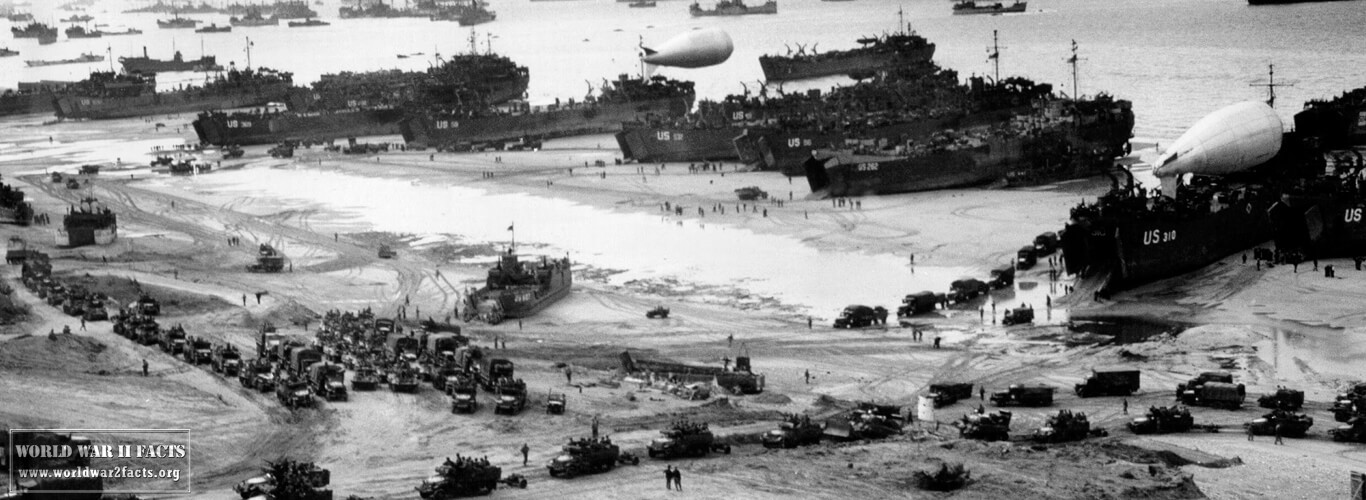World War 2 Tanks
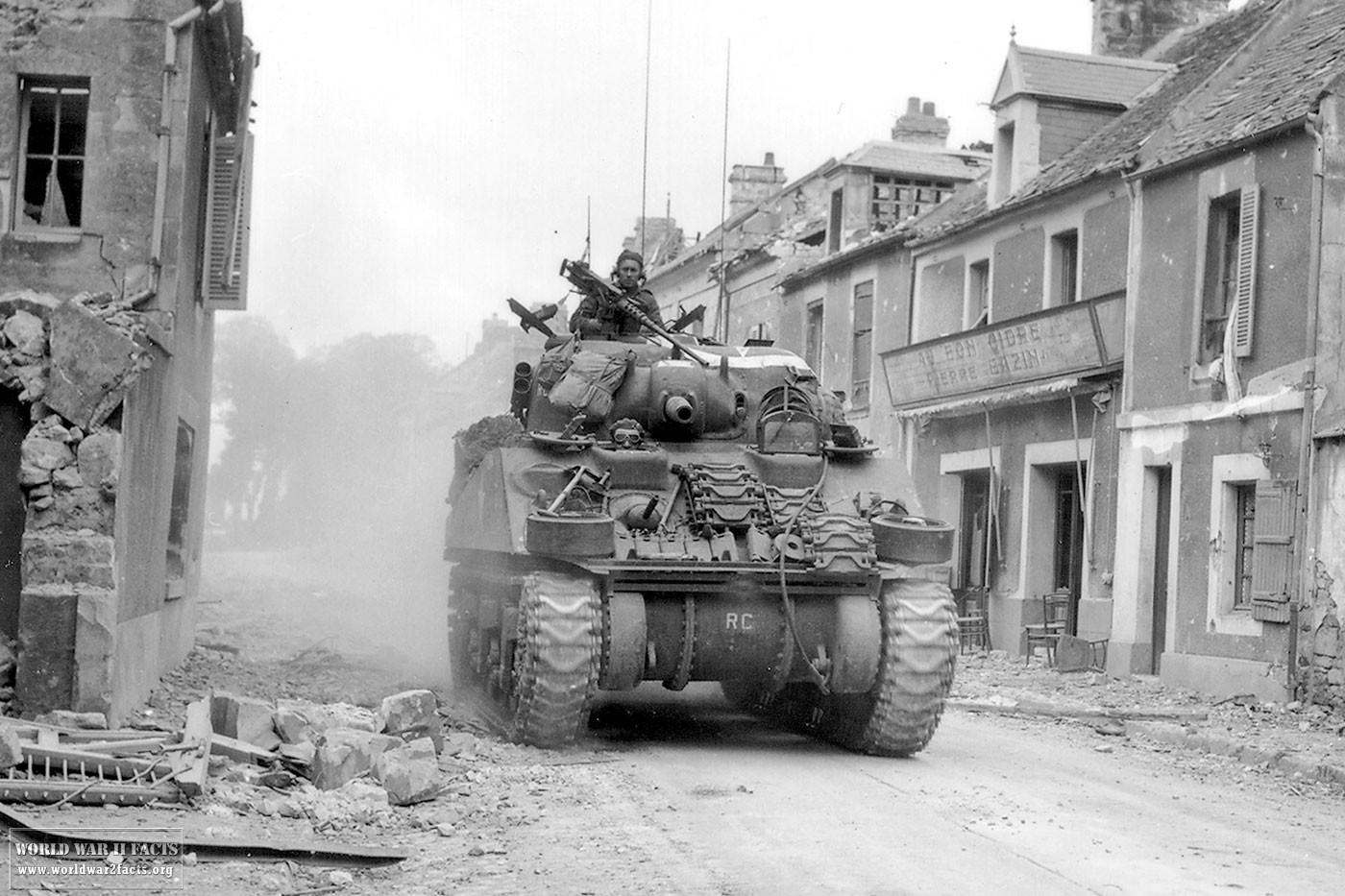
One of the biggest technological advances made during the Great War or World War 2 was in tank technology. Throughout World War 2, tanks played a major role in many of the battles that occurred throughout the war. Japan and Italy produced the greatest number of tanks throughout the war, however, the German tanks were best known during and after the war. There are a large number of countries and tanks that were used in the Great War, so please treat this document as an evolving record until we have all recorded!
Early German Tank Focus
Contents
- Early German Tank Focus
- U.S. Sherman Tank Development
- World War 2 Tanks by Country
- Canadian Tanks in World War 2
- German World War 2 Tanks
- Polish Tanks in World War 2
- Romanian Tanks in World War 2
- Soviet Union Tanks in World War 2
- United States World War 2 Tanks
- World War 2 Tanks Video
- World War 2 Tanks References
German tanks dominated all of their rivals in the early years of World War 2. There weren’t the most technologically superior machines with respect to firepower or armor; however, their tactical employment on the battlefield resulted in early German domination during the Great War. Early German doctrine placed an emphasis on the use of combined arms leveraging mobile infantry and air support and would become to be known as the Blitzkrieg tactic. German tanks were equipped with radios which provided superior command and control against the Allies who did not equip their tanks with radios early in the war. Due to the poor French command and control, the German tanks were able to succeed dramatically despite being technologically inferior.
U.S. Sherman Tank Development
The U.S. M4 Sherman was the predominant tank used by the Americans during the Great War. The tank was also distributed to the other
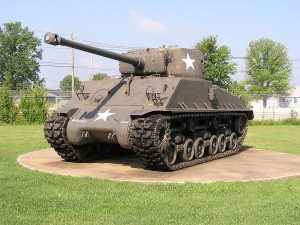
Allied Powers to include the Soviets and British under the lend-lease program. The British were actually the first to name the tank “Sherman” after U.S. General William Tecumseh Sherman. The tank had a 75 mm main gun mounted on a fully traversing turret with a gyrostabilizer. This allowed the crew to significantly improve firing accuracy while on the move. Although it would not be the most technologically superior tank throughout the war, the Sherman was one of the easiest tanks to fix, was durable, and the standardization of ammunition and parts along with its moderate size and weight gave the Allies a much higher reliability factor on the battlefield than their German counterparts. The later versions of the Sherman featured an improved 76mm gun that proved more effective at penetrating German armor, though not at range. In the Pacific campaign, the tank was used primarily against Japanese fortifications and infantry and was vastly superior to the Japanese tanks fielded.
World War 2 Tanks by Country
Australian Tanks in World War 2
- Cruiser Tanks
- Sentinel
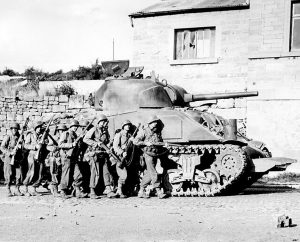
Canadian Tanks in World War 2
- Cruiser tanks
- Cruiser Tank Ram
- Cruiser Tank Crusader (UK Cruiser Tank Mk VI Crusader)
- Flamethrower tanks
- Anti-aircraft tanks
- Skink
Czechoslovakia Tanks in WW2
At the time of the Sudeten crisis, the Czech army had a number of light tanks to include the LT vz 35, LT vz 34, and 150 LT vz 38’s were ordered by not delivered prior to the German occupation of the country. The LT-35 and L-38 tanks were superior in construction to the early Panzer I and Panzer II tanks and would be produced for the Germans after their occupation of the country. The LT-35 and LT-38 would be withdrawn from front-line service in 1942 after being found to be unsuitable for extreme cold weather and vulnerable to the Russian T-34 medium tanks.
- Tankettes
- AH-IV
- Light tanks
- Kolohousenka
- Lehký tank LT vz. 35
- Lehký tank LT vz. 38
- Medium Tanks
- ČKD V-8-H
French Tanks in World War II
Although France was quickly overrun by the Germans in World War 2, the country had one of the largest tank forces in the world in 1940.
- Light tanks
- Renault FT-17
- AMR 35
- Hotchkiss H35
- Infantry tanks
- Renault R35
- Cavalry tanks
- SOMUA S35
- Medium tanks
- Char D1
- Char D2
- Heavy tanks
- Char 2C
- Char B1
German World War 2 Tanks

- Light tanks
- Pz Kpfw I
- Pz Kpfw II
- Medium tanks
- Neubaufahrzeug
- Pz Kpfw 35(t)
- Pz Kpfw 38(t)
- Pz Kpfw III
- Pz Kpfw IV
- Pz Kpfw Panther
- Heavy tanks
- Pz Kpfw Tiger Ausf E
- Pz Kpfw Tiger Ausf B
- Super heavy tanks
- Pz Kpfw Maus
Hungary WWII Tanks
- Light tanks
- V4
- 38M Toldi I and 41M Toldi II
- Medium tanks
- 40M Turan I
- 41M Turan II
Italian Tanks during World War 2
- Tankettes
- Carro Armato L3/33
- Carro Armato L3/35
- Carro Armato L3/38
- Light tanks
- Carro Armato L6/40
- Medium tanks
- Carro Armato M11/39
- Carro Armato M13/40
- Carro Armato M15/42
- Heavy tanks
- P 40
Japanese World War 2 Tanks
- Tankettes
- Type 88
- Light tanks
- Type 94
- Type 95 “Ha-Go”
- Type 97 “Te-Ke”
- Type 4 “Ke-Nu”
- Medium tanks
- Type 89 “Yi-Go”
- Type 89 “Otsu”
- Type 97 “Chi-Ha”
- Type 1 “Chi-He”
- Type 3 “Chi-Nu”
- Heavy tanks
Polish Tanks in World War 2
The Polish military was the first to be attacked by the German Blitzkrieg tactic. The Polish 7TP (7 Ton Polish) light tank was considered a technically superior tank to the Panzer I and II. The 7TP evolved from the initial leasing of the Mk E British Vickers 6-ton tank. The Polish improvements of the tank included adding a powerful diesel engine (making the tank the first diesel run one in the world), thicker armor (17mm in front), a 37 mm anti-tank gun, a new air conditioning system, and a radio. There were approximately 132 made prior to the start of the war with a final weight of 9 tons. The tank was made in both twin and single turret versions, with the single turret design proving to be the better tank.
Poland also employed the TK-3 tankette which was an improved version of the UK Carden Loyd tankette with an upgraded chassis. The tankette, unfortunately, was only suitable to take on the German Panzer I and suffered significant losses during the invasion of Poland.
- Tankettes
- TK-3 and TKS
- Light tanks
- 7TP
- Renault R35
Romanian Tanks in World War 2
- Tankettes
- R-1 (Czechoslovakian AH-IV)
- Light Tanks
- R-2 (Czechoslovakian LT vz. 35)
Soviet Union Tanks in World War 2

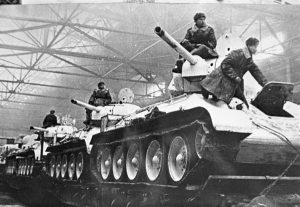
- Light Tanks
- BT-2, BT-5 and BT-7
- T-26
- T-38
- T-40
- T-60
- T-70
- Medium Tanks
- T-28
- T-34
- T-44
- Heavy Tanks
- SMK
- KV-1
- KV-2
- T-35
- T-100
- JS-1
- JS-2
- JS-3
United Kingdom Tanks in World War 2
- Light Tanks
- Light Tank Mk VI “Vickers”
- Light Tank Mk VII “Tetrarch”
- Infantry Tanks
- Infantry Tank Mk I “Matilda”
- Infantry Tank Mk II “Matilda II”
- Infantry Tank Mk III “Valentine”
- Infantry Tank Mk IV (A22) “Churchill”
- Medium Tanks
- Sherman
- Cruiser Tanks
- Cruiser Tank Mk VI “Crusader”
- Cruiser Tank Mk VIII “Cromwell”
- Cruiser Tank Comet I (A34)
- Cruiser Tank Centurion (A41)
United States World War 2 Tanks
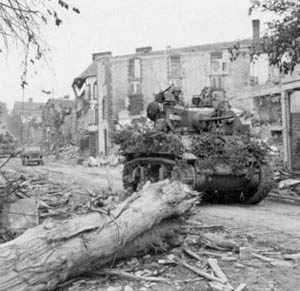
- Light tanks
- Light Tank, M1 (Combat Car, M2)
- Light Tank, M2
- Light Tank, M3
- Light Tank, M5
- Light Tank, M22
- Light Tank, M24
- Medium tanks
- Medium Tank, M2
- Medium Tank, M3
- Medium Tank, M4
- DD Tanks on D-Day
- Heavy tanks
- Heavy Tank, M26
- Heavy Tank, T28
World War 2 Tanks Video
World War 2 Tanks References
The following are World War 2 Tanks references used in development of this article that you may find useful when seeking out additional information on the topic:
- “A Tank Arsenal: How Its Assembly Lines Operate”. Life. 1942-08-10. pp. 69–70. Last Accessed March 23th, 2013.
- 1942 Auto Mitrailleuse CDM Chars-francais.net, last accessed 23 March 2013.
- Imperial Army Japanese Tank Information, Last Accessed March 23th, 2013.
- “Red Army Fights for Mother Russia”. Life. 1942-10-05. p. 29. Last Accessed March 23th, 2013.
- “U.S. Auto Plants are Cleared for War”. Life. p. 19. Last Accessed March 23th, 2013.
- World War 2 Tanks, Wikipedia, Last Accessed March 23th, 2013.
